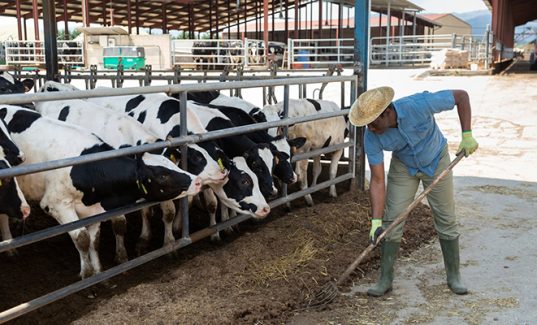PI counts reflect the cleanliness of cows and equipment. Lowering PI can help increase milk quality and profitability.
 Consumers continue to become more aware of where their food comes from and how it is produced. The quality of that food matters! The main goal of all dairy producers is to maximize milk production while delivering the highest quality milk. Producers and milk cooperatives often use somatic cell count or SCC to determine the presence of infection based on the number of somatic cells within the milk. A somatic cell count is one measure of milk quality within a herd. However, a low SCC may not provide the whole picture of milk quality. The preliminary incubation (PI) count is a test that can detect bacteria, called psychrotrophic bacteria, that grow in cold environments. Technicians can detect this type of bacteria by holding milk at 55°F for 18 hours (Reeves & Amaral-Phillips, n.d.). Psychrotrophic bacteria produce enzymes during chilled storage that can damage both the milk protein and fat, leading to decreased milk quality. These enzymes can survive pasteurization and potentially reduce the milk’s shelf life, which is why dairy processors are encouraging farmers to maintain a low PI count. Producers can lose milk bonuses if these bacteria are not controlled. From a producer standpoint, the PI count can be used to reflect the cleanliness of equipment and cows. Ideally, farms should strive for a low PI (<10,000 CFU/mL) (Scott, 2006).
Consumers continue to become more aware of where their food comes from and how it is produced. The quality of that food matters! The main goal of all dairy producers is to maximize milk production while delivering the highest quality milk. Producers and milk cooperatives often use somatic cell count or SCC to determine the presence of infection based on the number of somatic cells within the milk. A somatic cell count is one measure of milk quality within a herd. However, a low SCC may not provide the whole picture of milk quality. The preliminary incubation (PI) count is a test that can detect bacteria, called psychrotrophic bacteria, that grow in cold environments. Technicians can detect this type of bacteria by holding milk at 55°F for 18 hours (Reeves & Amaral-Phillips, n.d.). Psychrotrophic bacteria produce enzymes during chilled storage that can damage both the milk protein and fat, leading to decreased milk quality. These enzymes can survive pasteurization and potentially reduce the milk’s shelf life, which is why dairy processors are encouraging farmers to maintain a low PI count. Producers can lose milk bonuses if these bacteria are not controlled. From a producer standpoint, the PI count can be used to reflect the cleanliness of equipment and cows. Ideally, farms should strive for a low PI (<10,000 CFU/mL) (Scott, 2006).
Trouble-Shooting PI Counts
Guidelines have been developed to help producers troubleshoot high PI counts. It is important to remember that mastitis-causing organisms are not likely to increase PI counts, although there may be exceptions. General areas for improvement of PI counts include:
Cow cleanliness
- Teats should be sanitized with an approved pre-dipped then wiped with a clean/dry towel until free of dirt and moisture. Many species of bacteria will grow on the udder without proper teat preparation and drying practices.
Milking Equipment Sanitation
- Rubber parts such as hoses, gaskets, and liners, need to be adequately cleaned, air-dried, and changed on a routine schedule. Cracks within the rubber parts can harbor bacteria and increase PI count.
- Bulk tanks, outlet valves, receiver jars, and components should be cleaned and sanitized after each milk pick-up like milking equipment.
When dealing with a high PI count, a significant factor is using wash water that is not hot enough when cleaning milking equipment with detergent. It is vital to make sure the wash water temperature is between 155 to 170°F at the start of the wash. Drain water when the wash water temperature reaches 120°F, if not before. - After washing equipment using hot water and detergent, an acid wash should be completed to prevent bacterial growth over a more extended period.
- It is recommended to sanitize milking equipment before each milking using iodine or chlorine-based sanitizer.
Cooling of Milk
- Poor milk cooling in a bulk tank will also allow psychotropic bacteria to grow. Milk should be cooled to 40°F within 1 hour of milking for the first milking stored in the bulk tank. It should continue to be cooled to 36 to 38°F within the next hour. When additional milk is added, blend temperature should remain below 45°F and then cooled like the first milk. Storing milk at temperatures of 33 to 35°F may not completely kill temperature-resistant bacteria, but it can significantly slow their growth (Reeves & Amaral-Phillips, n.d.).
Troubleshooting PI problems can be time-consuming for farms. Typically, a high PI count indicates improper habits on the farm. Proper sanitation practices and improved management practices can potentially lower the PI count on your farm and help to increase milk quality and profitability.
Source: Amber Yutzy, Acting Assistant Director Penn State Extension




